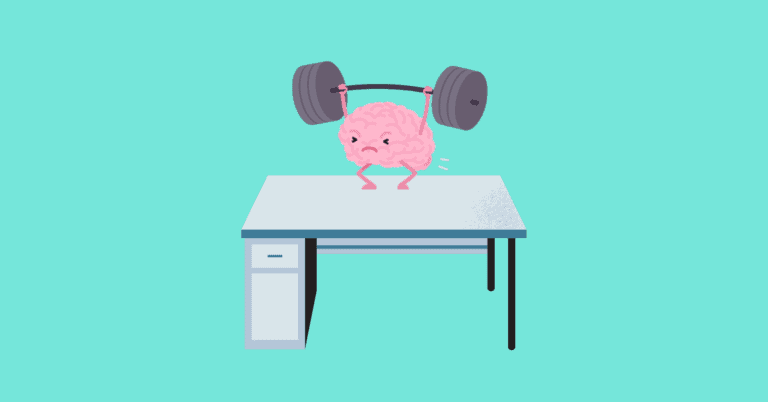New to working out? Why is it important to ease into an exercise program?
Starting an exercise program is an exciting venture, and it shows that you are investing in your own well-being.
However, diving in too quickly can lead to setbacks. In the eagerness to achieve fitness goals, many individuals overlook the importance of easing into a workout routine. This article explores why taking a gradual approach to exercise is crucial for long-term success and how it can help you achieve your fitness aspirations sustainably.
So, why is it important to ease into an exercise program?
Short answer, exercise adherence is key.
All the points made below are sure ways to lead to exercise setbacks and will only prolong your exercise journey.
You don’t want to injury yourself
One of the primary reasons to ease into an exercise program is injury prevention. If you are new to exercise or do not engage in consistent physical activity, going hard and ramping up your routine in a single day can lead to injuries.
Overuse injuries, which can develop over one day to a few weeks, are particularly common when your body is not accustomed to the intensity of the chosen physical activity. Such injuries can include strains, sprains, and stress fractures, setting you back (because you would likely have to decrease your physical activity during recovery) and potentially discouraging you from continuing your fitness journey.
There’s a balance between challenging your body enough to promote growth and pushing it to the point of injury. You can call it the “Goldilocks zone” of exercise intensity.
So while you want to challenge yourself, you don’t want to do it to the point of injury.
By gradually increasing the intensity of your workouts, you learn to listen to your body’s signals and adjust accordingly. This not only reduces the risk of injury but also fosters a deeper understanding of your body’s capabilities and room for growth.
Of course, this doesn’t mean avoiding a high intensity workout.
Intense workouts still have a place in a balanced exercise regimen, especially if you enjoy them. However, knowing your body’s limits allows you to stay more in tune during high-intensity sessions, ensuring a safer and more effective workout experience
Quality over quantity
Easing into an exercise program emphasizes quality over quantity. Exercise involves control over your movements, and proper form is paramount.
It’s not just about preventing injuries; it’s also about activating and challenging the right muscles effectively. Proper form develops your motor control and muscle memory, ensuring that you carry the correct form of movements with you throughout your exercise routine.
By focusing on quality over quantity, you’re building a strong foundation for future progress, setting yourself up for long-term success in your fitness journey.
You don’t want to hate exercise
Another important reason to ease into an exercise program is to avoid developing a negative association with physical activity. Starting off too aggressively can lead to burnout, frustration, and ultimately, a dislike for exercise. By gradually introducing yourself to workouts and choosing activities that you enjoy or at least don’t dread, you’re more likely to develop a positive relationship with exercise. Taking the time to find activities that align with your interests and fitness level can make the experience more enjoyable and sustainable in the long run, preventing you from dreading your workouts and increasing the likelihood of sticking to your exercise routine over time.
Tips for starting a workout routine (and sticking to it)
Set a designated workout time and prepare for it
Firstly, choose the specific time and days that you’ll dedicate to your workouts. Whether it’s early mornings before your day kicks off or evenings after work, selecting a schedule that aligns with your daily routine is crucial.
Once you’ve established your workout schedule, prepare for each session in advance. For example, if you plan to hit the gym after work, pack your gym bag the night before with your workout attire, sneakers, water bottle, and any other necessary items.
It’s often said that the hardest part of exercising isn’t the physical activity itself but rather getting started. By setting a designated workout time and preparing for it ahead of schedule, you eliminate potential barriers and make it easier to stay committed to your fitness routine.
Motivation is fleeting, but habits are not. So, take the necessary steps to set yourself up for success, and soon enough, exercising will become a seamless part of your daily life.
Start slow
As is the main theme of this article, by starting slowly, you give your body the opportunity to adapt to the new demands placed upon it, reducing the risk of injury and burnout.
Additionally, starting with shorter sessions allows you to gauge your fitness level and gradually build up your stamina and endurance.
A great starting point is aiming for 20-30 minute sessions of moderate intensity workouts. If you were to rate your level of exertion on a scale of 1 to 10, with 1 being extremely easy and 10 being extremely hard, moderate-intensity exercise typically falls around a 5 or 6 on this scale.
Pick exercises you enjoy (or don’t hate)

Selecting exercises that you genuinely enjoy or at least don’t dread is crucial for sticking to your workout routine in the long run.
For instance, some individuals may feel compelled to incorporate high-intensity interval training (HIIT) into their routines due to its reputation for effectiveness in achieving fitness goals. However, recognize that opting for low to moderate intensity routines can still be highly beneficial.
Whether it’s a hike, a dance class, a brisk walk on an incline treadmill, or a kickboxing session, the most effective exercise is the one you’ll consistently do. This approach not only enhances adherence but also contributes to the overall sustainability and enjoyment of your fitness journey.
Plan to eat something 30 minutes to 2 hours beforehand

Fuel your body adequately before your workout. Working out on an empty stomach can leave you feeling weak, fatigued, and unable to perform at your best. Therefore, aim to have a meal containing carbohydrates and protein about two hours before your workout, or a light snack about 30 minutes to an hour beforehand.
Hydrate
You have heard this one before.
Hydration plays a crucial role in regulating body temperature, lubricating joints, transporting nutrients, and supporting exercise performance among other things.
To ensure you’re adequately hydrated before your workout and to avoid potential stomach discomfort, aim to drink water about 30 minutes beforehand.
Consider listening to music
Adding your favorite music to your routine can add more enjoyment to your new exercise program. So, whether you prefer pop, rock, hip-hop, or electronic music, create a playlist that gets you pumped up and ready to tackle your workout.
This is an under-rated tip, but give it a try, you might just be surprised to find that you look forward to your daily workout.
Prepare for DOMS
When starting a workout program, be aware that delayed onset muscle soreness (DOMS) is a common occurrence. DOMS typically occurs 24 to 48 hours after engaging in unfamiliar or intense physical activity, and it’s characterized by muscle stiffness, tenderness, and soreness.
DOMS is a natural response to the stress placed on muscles during exercise, particularly when you’re starting a new workout routine or increasing the intensity or duration of your workouts. It’s a sign that your muscles are adapting to the new demands being placed upon them and is considered a normal part of the muscle repair and rebuilding process.
It usually resolves on its own within a few days as your muscles recover and adapt to the exercise stimulus. There are some strategies you can use to alleviate DOMS and promote recovery, such as gentle stretching, foam rolling, staying hydrated, and engaging in light, low-impact exercise.
What am I going to get out of regular exercise?
Everything. I may be a little biased but the benefits of exercise are so wide and well-known that there are literally dozens of different careers centered around studying and promoting exercise.
For instance, in physical therapy, specific therapeutic exercises are “prescribed” to target specific deficiencies, conditions, and promote injury recovery.
Now, according to the CDC physical activity guidelines, adults should aim for at least 150 minutes of moderate-intensity aerobic activity or 75 minutes of vigorous-intensity aerobic activity per week, or an equivalent combination of both. Additionally, include muscle-strengthening activities on two or more days per week, targeting all major muscle groups.
Improved cardiovascular health
When you engage in physical activity, your heart rate increases, and your blood vessels dilate, allowing for more efficient blood flow throughout your body. Over time, this leads to several positive adaptations in your cardiovascular system, including reduced risk of chronic diseases (such as diabetes and coronary heart disease), enhanced blood circulation, improved blood lipid profile, and improved heart health.
Improved muscular health and functional
Similar to the above point, When you engage in physical activity, your muscles are challenged and stimulated, leading to a wide range of beneficial adaptations.
Nonetheless, the best way to improve muscle strength and endurance is to incorporate strength training exercises into your routine.
Better sleep
Exercise has been shown to improve sleep quality and duration, helping you feel more rested and rejuvenated.
Better immune function
Regular physical activity boosts the immune system, reducing the risk of illness and promoting overall health and well-being.
Improved emotional well-being
Engaging in regular physical activity has been shown to have numerous positive effects on mental health and emotional well-being.
For instance exercise releases endorphins, neurotransmitters that promote feelings of happiness and reduce stress and anxiety.
It can boost self-esteem and confidence by promoting a sense of accomplishment and mastery. Achieving fitness goals, improving physical fitness, and feeling stronger and more capable can all contribute to a positive self-image.
This list is not all encompassing; there are many other benefits of regular exercise. Mostly, all of these benefits point to a better quality of life.
Bottomline
By embracing a gradual approach, you pave the way for success by prioritizing safety, enjoyment, and the long-term sustainability of your exercise routine. Exercise becomes a habit —one that you might even find yourself looking forward to.





